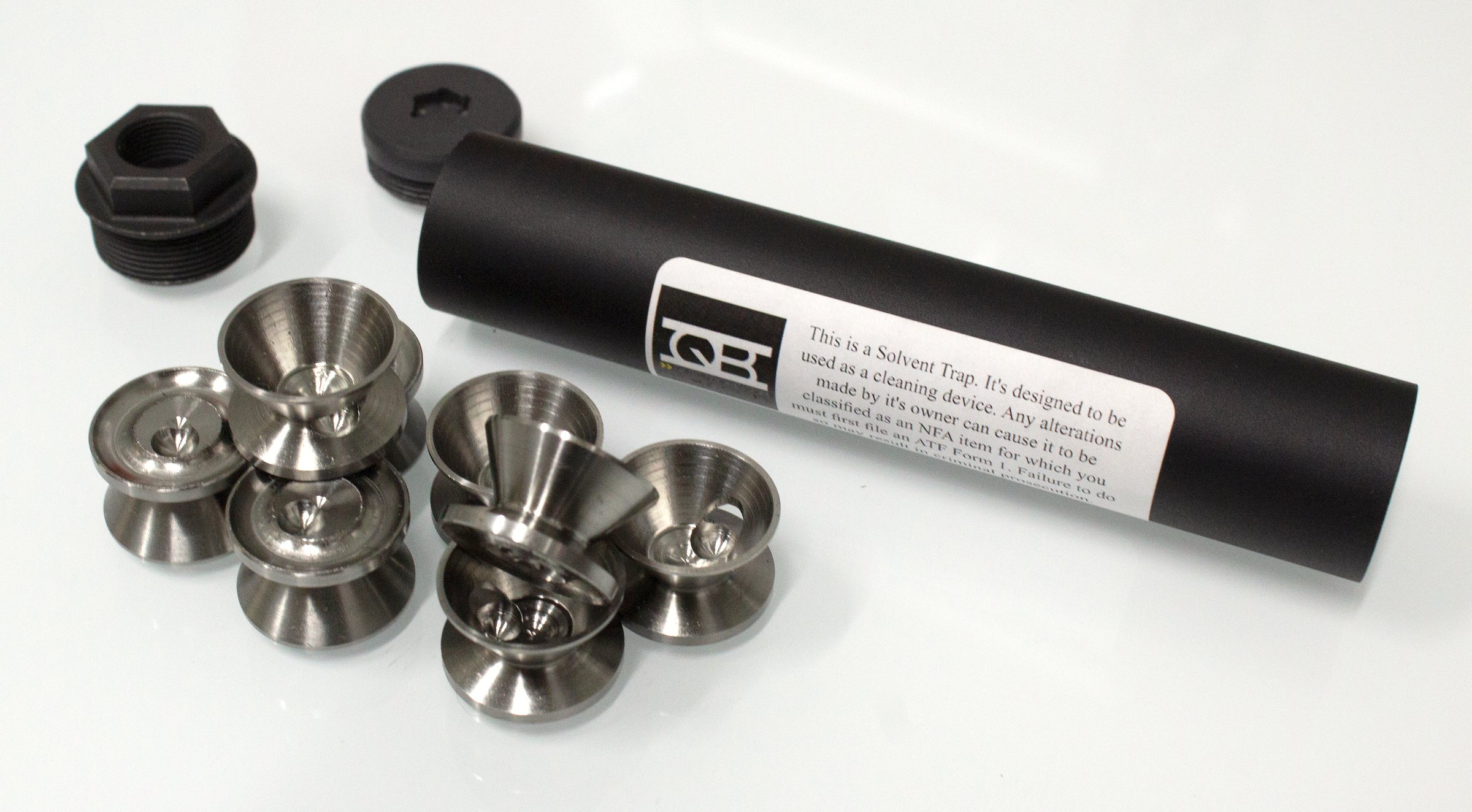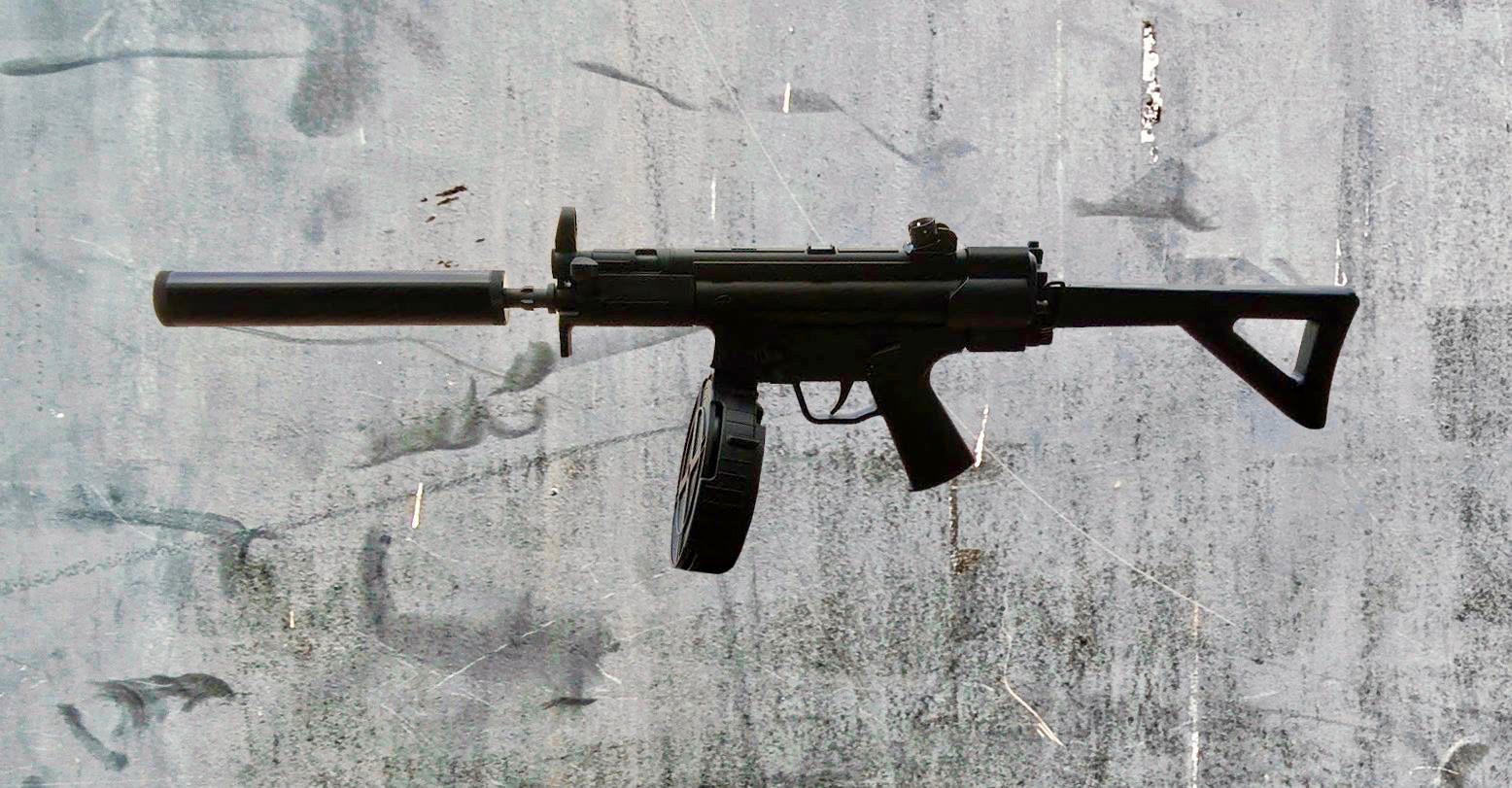SD Tactical Arms calls them barrel shrouds. Hawk Innovative Tech says they’re solvent filters. Prepper’s Discount sells flashlight tubes. But with a few hours and a little elbow grease, all of these products become the same thing: gun silencers.
Silencers, otherwise known as suppressors, are among the most highly regulated gun accessories in the United States. Under federal law, consumers must apply for a license to purchase them. The process involves paying a fee to the Bureau of Alcohol, Tobacco, Firearms and Explosives and submitting to extensive screening. It can take more than a year to get an answer. Americans eager to skip the wait, though, have a shortcut: tap one of the dozens of online retailers selling de facto suppressor parts and build their own.
Even a search for “solvent traps” on Amazon returns a page of unrelated items useful in silencer construction, such as automobile fuel filters. A spokesperson from Amazon refused to comment for this story, but emphasized that all the products sold on the site are legal.
This summer’s spate of mass shootings has increased the appetite in Washington for more restrictive gun safety laws, with Democrats now pushing for a new ban on assault weapons. But if the political calculus on pursuing new firearms restrictions is changing, the flourishing market for DIY silencers shows how difficult it can be to enforce regulations on guns and gun products when those regulations hinge on precise technical specifications.
Peter Tilem, a criminal defense attorney in New York with experience defending gun crimes cases, put it this way: “You can’t control people taking legitimate items and making them into something illegitimate. Sudafed is readily available; it’s also a precursor to methamphetamine, but we can’t ban Sudafed.” Homemade suppressors, like rubber bands used to make bump stocks and modified assault weapons, provide an avenue around restrictions.
Building a suppressor at home is, in theory, perfectly legal. Federal law requires that anyone who does so still register the device, and submit to a background check before construction. But the registration process, which is electronic, can be more than twice as fast as acquiring a completed suppressor from a manufacturer.
Bob Folkestad, the founder of a leading solvent trap retailer called Quiet Bore, told The Trace the ATF forced manufacturers like him into business. “It’s $450 and a yearlong wait [to purchase a suppressor],” he said. “Buy a solvent trap, and you can be approved in two to four weeks.” Solvent traps are designed to collect cleaning fluid from the barrel of a gun, and amateur gunsmiths can easily convert them into suppressors.
Many members of a popular Facebook group devoted to the construction of homemade suppressors agree with Folkestad. One user, who joined the group in June, said in a post that he wished he had known about the do-it-yourself option before he filed paperwork to buy from a licensed retailer. “Will definitely be doing a Form 1 on the next one,” he wrote, referring to the registration required to make a suppressor at home. In the past month, the group has grown by more than 1,000 users.
Federal law regulates online firearms sales just as it does sales from brick-and-mortar shops: Retailers must conduct background checks for every purchase and ship weapons to federally licensed dealers for pickup. Solvent trap retailers and others like them can sidestep these restrictions since their products are not technically firearms. The parts necessary for building a suppressor from home can thus be bought on Amazon or niche sellers like Quiet Bore, without regulation. Though not household names, some of the specialized sellers have attracted dedicated followings, as online comments attest. “Their products are quality, and their customer service is outstanding,” reads a recent Facebook review of SD Tactical Arms, posted along with a photo of a homemade suppressor and a completed Form 1 application.
According to interviews with former federal agents, gun retailers, and lawyers, two problems underpin this expanding gray market: First, long wait times incentivize quick workarounds like solvent traps that can easily be converted to silencers. Second, the ATF has issued technical opinions that make those workarounds extremely challenging to prosecute.
Such challenges compound work the agency already considers low-priority. Dogged by a lack of funding and inadequate technology, Ronald Turk, the former associate deputy director of the ATF, wrote in a leaked 2017 white paper that the agency should consider removing silencers from the list of items regulated under the National Firearms Act to ease the burden on ATF staff. He noted that there had been numerous complaints to Congress about processing times for suppressor applications, which make up the vast majority of registrations under the act.
Some former agents speculate that the unwillingness to pursue these cases is partly rooted in the agency’s inconsistency in defining what constitutes a silencer. A series of technical determinations issued by the ATF’s Firearms Technical Division since 2011 have made it legal for companies to design and sell items nearly identical to silencers without regulation, so long as they have a plausible alternative use. The technical rulings do not take into account how effectively the items suppress sound.
Rick Vasquez, who led the ATF’s technical division until shortly before the first of these rulings and now runs a security consulting firm, called the determinations a blunder. He said they have allowed companies to sell otherwise regulated devices without accountability. “What the ATF basically did,” he said, “was give everyone a get-out-of-jail-free card.”
In an email, Scott Curley, a spokesperson for the ATF, denied that the agency has issued inconsistent rulings. He said the ATF sets rules for selling suppressors in accordance with the 1968 Gun Control Act, which requires agents to prove the intended use of any parts they call silencers in order to bring a case. This makes technical assessments notoriously difficult.
Terry Clark, another former ATF agent who worked at the bureau until 2013, placed less blame on his former employer, saying the agency’s technical determinations are a perfectly legitimate reading of the law, which is up to Congress to change. “[But] it’s opened up the door for people to perform illegitimate acts that can’t be criminally prosecuted,” he acknowledged. “So our hands are tied.”
The federal government began regulating silencers in 1934, following an era in which they frequently did turn up in crimes. But ATF agents today insist that criminals seldom use the devices in violent crimes. According to one 2007 study, federal courts prosecuted 153 cases involving silencers between 1995 and 2004, and a criminal fired a weapon in only 2 percent of them. The devices also don’t dampen the sound of gunfire as much as a James Bond film might imply. Suppressed gunfire is still louder than a chainsaw.
The rarity of silencer crime today may be due to tight federal regulation, but criminals do sometimes seek out the devices. In July, two men were arrested in connection with a robbery of an Indiana gun store, in which they stole two silencers. On the same day, law enforcement officers in Illinois found drugs, a rifle, and a silencer in the Jeep of a man they pulled over for driving without a seatbelt. Two weeks earlier, another man in California was arrested after law enforcement officers found a trove of assault weapons and a DIY silencer in his home.
Cases in which suppressors were used to conceal the firing of a gun were more difficult to identify, which other former agents say explains the lack of attention from the agency.
“It’s hard to justify [ATF agents] getting mucked up focusing on people who are breaking the law but don’t intend to then use that illegal gun in [violent] crime,” said David Chipman, a former ATF agent who now works as a senior policy advisor at the Giffords Law Center.
Silencers received renewed attention following June’s Virginia Beach shooting, in which a gunman killed 12 city employees with a suppressed firearm. In response, Senator Robert Menendez and Representative Bonnie Watson Coleman, both of New Jersey, introduced a bill that would ban the attachments outright. At the same time, a Republican-sponsored bill would strip existing regulation of silencers, eliminating all screening beyond a background check.
Watson Coleman said in an email that the ease of building a silencer at home is no excuse for congressional inaction. “Our complete paralysis when it comes to keeping maximum-damage weapons and devices like suppressors out of the market — whether they’re assembled in a factory or easily constructed at home — is disgusting,” she wrote.
Whether or not a bill is passed, the ATF has no way of preventing people from building silencers from legally acquired parts, and no way to track how many individuals illegally bypass the registration process. Instead, they rely on an honor system buttressed by fear of surprise raids.
Even in the rare cases when the ATF does crack down, retailers have found ways to circumvent punishment. The Trace reported in 2017 that the ATF had taken action against three companies for selling silencers disguised as solvent traps. Two of the companies, Dark Side Defense and Solvent Traps, Etc., were forced to close. The third, SD Tactical Arms, simply shut down its line of solvent traps and began selling barrel shrouds, whose measurements and hardware closely match those of the old solvent traps.
SD Tactical did not reply to multiple requests for comment. An ATF spokesperson confirmed that the barrel shrouds were legal under the Gun Control Act’s intent standard.
A barrel shroud is supposed to protect shooters from burning their hands on the barrels of their guns. On a popular web forum for sharing tips about building suppressors, one user was frank: “Nothing has changed but the name,” they wrote.


